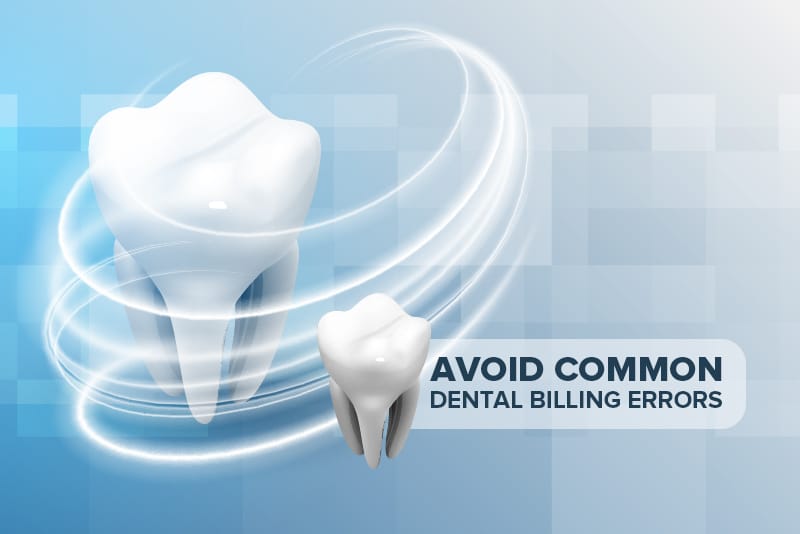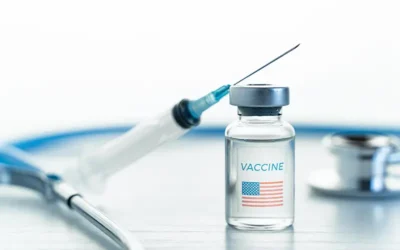The dental billing and claims submission process involves many complex steps. Even simple errors can lead to denials and cash flow interruptions. Correcting mistakes and resubmitting claims is a costly and time-consuming process. While working with an experienced dental billing company can help practices ensure efficient claim submission, it is important to be aware of the common dental billing errors so that they can be avoided.
Key Reasons for Dental Claim Denials
-
- Incorrect/incomplete patient demographic information: Clean data is crucial for smooth dental insurance billing. Even trivial errors on an insurance claim can be costly. Inaccurate information that can cause a claim to be returned can include:
- Inaccurate patient information (sex, name, date of birth, Social Security number, etc)
- Inaccurate provider information (address, name, contact information, etc)
- Inaccurate insurance provider information (wrong policy number, address, etc)
- Incorrect/incomplete patient demographic information: Clean data is crucial for smooth dental insurance billing. Even trivial errors on an insurance claim can be costly. Inaccurate information that can cause a claim to be returned can include:
Ensuring to complete Dental eligibility verification for each patient before the scheduled office visit can prevent data entry mistakes and omissions. Collect and verify all information upfront and make sure to update existing patient’s information that may have changed, such as home address, employment status, or contact number. Confirm insurance information, such as the name of the company, member ID number, and member DOB.
- Not verifying insurance eligibility and coverage: Not verifying the insurance eligibility before services are provided can be a very costly mistake. Things to verify include:
- Active coverage-check whether the patient will have insurance coverage on the date of service, which procedures are covered, and how much each procedure is covered for
- Benefit options-copays and coinsurance
- Predetermination-procedures such as a crown or bridge may need to be submitted for predetermination before the procedure is completed
Obtain a breakdown of benefits, check the insurance maximum, deductible amounts, and the balance amount left for the calendar year. Accurately calculate out-of-pocket expenses so that they can quickly understand what they owe at the time of service. If patients cannot afford to pay the balance, they can be provided payment options.
In addition to supporting claim submission, properly verifying insurance benefits will also allow to keep patients informed about their coverage, which will enhance the patient experience. The American Dental Association (ADA) says that predeterminations on complex, costly procedures should be submitted as close to the date of proposed service as possible.
- Coding mistakes: Coding errors can lead to delayed payment or denied claims and even fines and allegations of fraud. Practices need to submit claims with the correct CDT codes and ICD-10 codes. Missing diagnosis codes are a common mistake. For example, K02.51Dental caries on pit and fissure surface limited to enamel is a possible ICD-10 code for CDT Code D1352Preventive resin restoration. Practices also need to be sure to avoid upcoding, down coding, and billing for services not rendered. Partnering with an expert is the best way to prevent coding errors. Companies providing dental billing services, have certified coders who stay updated on CDT and ICD-10 codes. Experts will ensure that every dental procedure is billed using the correct codes and the current version of the CDT and ICD-10 Codes. They will also check claims for errors, such as duplicate billing, that can cause denials.
- Not handling bundling correctly: Bundling, as defined by the ADA, is “The systematic combining of distinct dental procedures by third-party payers that results in a reduced benefit for the patient/beneficiary.” Third party payers resort to bundling when they do not recognize each component service for separate payment. For instance, a panoramic radiograph may be combined with bitewings for payment as a full mouth radiographic examination (FMX). The insurance will reimburse only the lower amount for the full mouth series.
Problems arise when the dental practice loses money because the payer inappropriately bundles procedures billed separately on the claim, or due to contract provisions without an explanation.
Patient benefits are reduced when procedures are inappropriately bundled. Practices can combat bundling and get the correct reimbursements by checking claims submissions against the EOB forms. EOBs should be checked for coding changes and reimbursements that do not meet the dentist’s contract. Practices can ask their dental billing company to contact payers directly to clarify concerns related to coding of dental services.
- Not filing claims on time: To obtain prompt payment, claims should be submitted as soon as possible after services are provided. Some plans have a short filing period of 90 days while PPO plans generally require the claim to be submitted within one year from the date of service. Untimely filing can lead to denials, and in most cases, requests for appeals will also be rejected.Knowing payer rules is essential to ensure timely claim submission. For example, Cigna’s requirements are as follows:
- 90 days after the date of service for a participating health care provider
- 180 days after the date of service for an out-of-network provider
To ensure timeliness, dentists should know the specific time period mentioned in their contract.
- Not knowing when to file a medical claim: Providers should also know when to file a medical insurance claim instead of a dental insurance claim and when to file a medical claim as primary insurance and a dental claim as secondary insurance. Oral surgery and oral trauma, and biopsies to check for diseases inside of teeth, gums, and around the mouth, are cases where a medical insurance claim should be filed instead of a dental insurance claim. Procedures that require the patient to be put under anesthesia are filed under medical insurance. However, though medical pays as primary, depending on the policy, it may be possible to cross code to dental and the dental insurance will pay as secondary. Knowing the rules will help practices avoid denials and collect full payment for all services rendered.
- Submitting claims without supporting documentation: Keep accurate documentation and attach it along with the claim form. Narratives are important to provide sufficient information regarding difficult or extensive treatment. Proper documentation is necessary to support medical necessity and provide evidence that the procedure performed was necessary. Documentation can include x-rays, photos, and clinical notes.
Streamline Dental Billing Partner with an Expert
The ideal way to avoid these dental billing mistakes and ensure an efficient and smooth dental billing process is to partner with a dental billing company. With comprehensive support for everything from dental insurance verification services to coding and billing, and more, an expert can help ensure you maintain a financially healthy practice.




